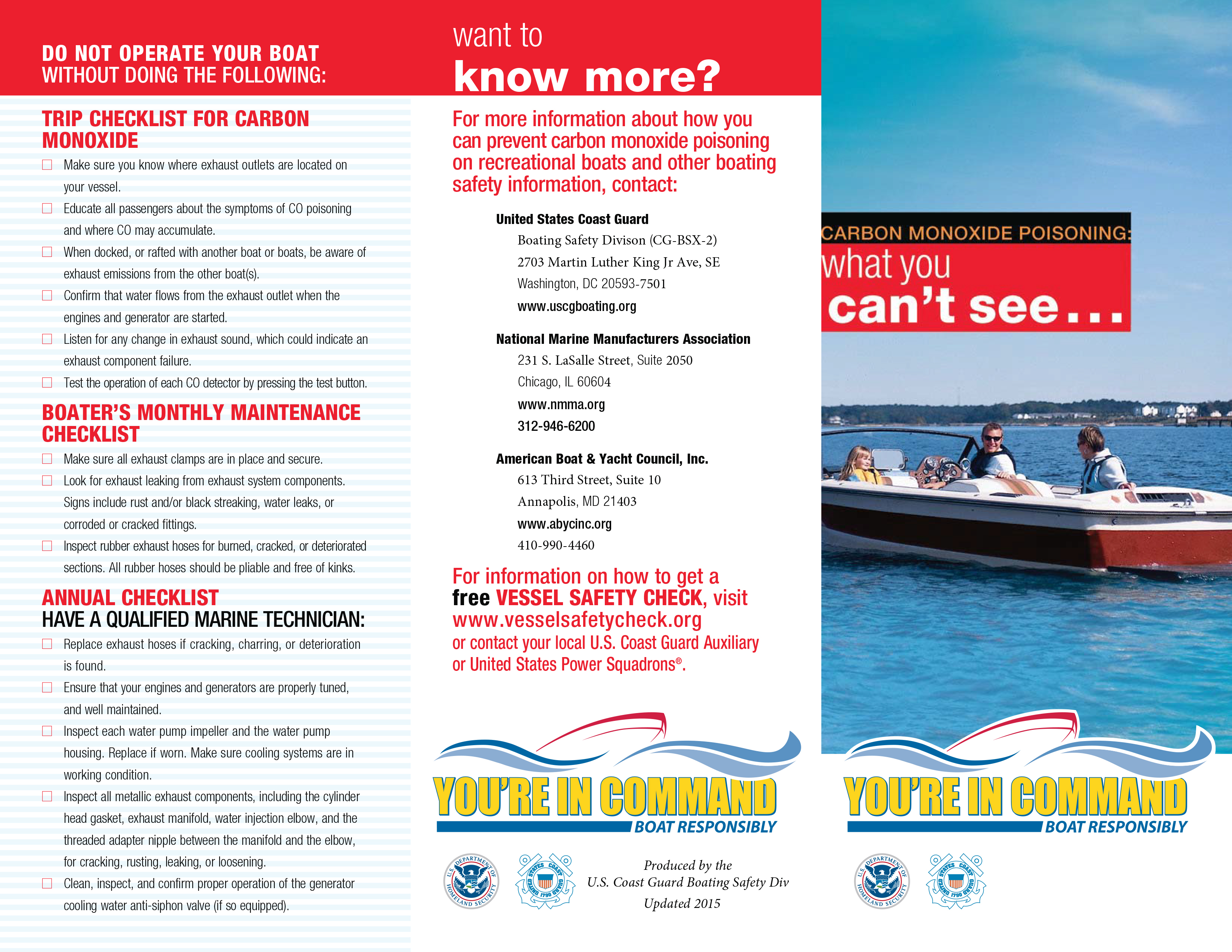|
How to prevent carbon monoxide accumulations, injuries and deaths on the boats you build. Winter is the season of Carbon Monoxide poisonings and deaths. This is not to say that CO deaths don't occur during the other seasons. They do. But in the winter many people resort to using portable generators and portable heaters to keep warm when storms knock out the power. Unfortunately they sometimes use them indoors filling the building with CO. Even people who have been trained about the dangers, and normally would not expose themselves to CO, sometimes do things that put them at risk. For example, just a few days before I wrote this (December, 2008) 29 people were treated for CO poisoning at a warehouse, simply because they closed the big doors to keep the place warm during a snowstorm. They were also using fork lifts that had internal combustion engines, inside the warehouse. The people who closed the door probably didn't even consider what the consequences would be. So what has this to do with boats? In most of the world where winters are frigid, few people go boating. So the problem is probably at it's low point in the winter for boats. But, in the summer, especially in areas that are hot and humid, the opposite problem, keeping cool, exists. This is especially so on boats, particularly houseboats, but it is not confined to them. CO poisoning on boats is not a new problem. The problem has become worse because boats have gotten better. Up until the 1960's, when fiberglass boat building really took off and boats Also engine rooms are tighter and better insulated to reduce noise. This also traps CO. Boats also have much larger and more powerful gasoline engines which need lots of air to run properly. When they don't get enough air they produce more CO. Styling decisions, to make boats more marketable, have also resulted in larger accommodations and designs that tend to create low pressure areas behind the boat that suck in exhaust, allowing it to enter through drains and vents. Styling has also resulted in placing exhaust outlets below swim platforms and on flat transoms, another way to trap CO. Another factor contributing to more CO was the increased use of permanently installed generators. Many of these were gasoline powered (most are diesel now) and are typically used when the boat is at anchor or tied up to the dock, to power air conditioners and a plethora of other electrical appliances such as refrigerators, televisions, computers and even electric stoves. The exhaust from these generators has been a major culprit in CO deaths. What to do: The first, and most important step is education. Boat builders must provide educational material on CO for the customers who buy their boats. Most of this is free and available from NMMA, the US Coast Guard, the Consumer Product Safety Commission and other organizations. Why? To prevent deaths which often wipe out whole families. It also reduces the manufacturer's exposure to liability and to having their good name destroyed. Just as important is designing the boat to reduce the possibility of CO entering the boat. ABYC has standards and technical reports that provide ways to reduce CO. This includes eliminating holes in bulkheads, providing adequate ventilation in engine rooms, and designing exhaust systems that direct CO away from the boat. Also, designing the interior and exterior of the boat to reduce areas that would tend to suck in CO is extremely important. It is not as easy as it sounds. Design Considerations: Installing marine carbon monoxide detectors is also crucial. Even after all the above has been done, conditions can exist that allow CO to get in the boat. CO detectors will give the occupants adequate warning to get out and ventilate the boat. In one state, Minnesota, CO detectors are required on certain types of recreational boats sold in the state. Known as Sophie's Law, it is named after 7 year old Sophie Baechler who died from carbon monoxide poisoning on her families boat. As of May 1, 2017, any new boat to be sold in Minnesota, that has an enclosed accommodation compartment must have a CO detection system. The requirements are the same as the ABYC standard for Carbon Monoxide detectors. Boat builders should obtain the following ABYC Standards: A-24 Carbon Monoxide Detection Systems The law also requires warning labels in the aft reboarding area, galley, and the helm. (this section added 08/15/2016. Excerpted in part from ABYC magazine, The Reference Point, Summer 2016 Issue) Certainly last but not least is the engine. Provide information to the customer about why it is so important to keep the engine properly tuned. It goes way beyond getting the most efficiency and economy. Provide maintenance procedures in the owners manual that include engine maintenance, inspecting exhaust systems, changing exhaust hoses when needed, and not running engines when not necessary. Provide an owners manual for the generator with the same type of information. In addition to the above you can place CO warning labels on the boat in prominent places such as the engine room hatch or door. Placing a warning label on swim platforms is very important. Provide emergency medical procedures in the owners manual in the case CO does get into the boat, and how to get help. Links to sites about Carbon Monoxide Poisoning: USCG On Carbon Monoxide Unity Home Group: https://www.akhomeshow.com/carbon-monoxide-safety.php References about Dealing with Carbon Monoxide: See Professional Boatbuilder Digital Issues Links to sites referenced above. National Marine Manufacturers Assoc, US Coast Guard on carbon Monoxide American Boat and Yacht Council Downloadable Standards California Boating and Waterways CO Brochure Houseboat-Associated Carbon Monoxide Poisonings on Lake Powell --- Arizona and Utah, 2000 CDC Review Carbon Monoxide Alert David Pascoe on Yacht Survey.com Revised 04/09/2024 © newboatbuilders.com 2010 All rights reserved.
|
Created with Dreamweaver 21.2 ©newboatbuilders.com 2022 All Rights Reserved


